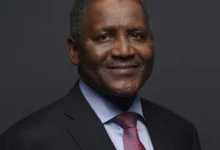The impact of modern means of transportation, communication and the printing press on Muslim education in Ghana (I)
The impact of modern means of transportation, communication and the printing press on missionary activities and education in the 20th century cannot be overemphasized. The case of the changes and impact made by these modern amenities on the religious and secular education of Muslims in the country is the topic for discussion.
After the establishment of Islam in North Africa in the period of the Islamic Caliphate, the south-ward drive of Islam from the North into West Africa, was carried on by the Wangaras, through their trading activities. They exchanged salt for gold and other products. They created new routes as well as established townships. They were then followed by missionaries and educationists. It was difficult to surmount natural barrier of the Sahara desert that impeded Islam’s progress into West Africa. The Sahara is roughly about a thousand miles in length from the west to the east in Egypt. It was also about 800 miles in width from the northern African countries to the fringes of the forest zones in West Africa. Further Isolation of West Africa comes from the fact that the region is bounded on the western and southern coast by the Atlantic Ocean. And not until the 15th Century when the Portuguese succeeded in sailing to the Coast in the area, no nation is on record of having sailed to that part of the world. Similarly, the thick tropical forest that spread from the west through the West African countries to central Africa served as another natural barrier that made penetration from the east almost impossible. Last but not the least was the deadly malaria that killed foreigners (Asians and Europeans). Stagnant waters in the area plus the warm tropical climate served as breeding grounds of mosquitoes. Not until 1820 when quinine was isolated from the bark of the cinch one as antidote of the malaria parasites, West Africa remained unsafe and inaccessible to foreigners from the south.
Let us consider the movement of goods and men from a North African country, say Libya or Morocco. It might be carrying copies of the Quran, carpets, cooking utensils, garments etc. In the region of the Sahara characterised by aridity, soaring high temperature, lack of water the possible presence of ferocious animals (hyenas) and high-way robbers, the caravan would move slowly. In addition it would need permission and protection to move from one tribal region to another. When all these are factored into the price of the goods by the time they reach their destination in northern Ghana, the result would be exorbitant. This is not only hypothetical but real taking into consideration fact that the price of a copy of the Quran was so exorbitant and prohibitive that only a vanishingly small number of Muslims could afford it. In short these was nothing in the life of the Muslim so precious and yet so accessible like a copy of the Quran. I have a copy of a hand-copied Quran made in the time of Samori .It was given to me by a Wala brother Mallam Yahya who passed away a year ago in 2023. May Allah have mercy on him. The cost price was seven slaves. How many Muslims could afford it? Very small. In the same vein carpets and rugs for prayers were equally so expensive to buy, so they improvised by using the skin of domestic animals like the sheep, goats and cows. They would dry and stiffen them for use as praying mats.
That single copy of the Quran would then serve the needs of a whole community or township. Here as well they improvised by making wooden slates on which were written verses from the Quran. Ink for writing was improvised by frying the seeds of corn till dry and black. Small quantity of water would then be added and boiled till thick and syrupy. Pens were made from dry and hard bamboo stems and branches sharpened into the shapes of pens for writing. In other words Quranic verses written on wooden slates served as small boards used for learning by students. With the advent of the printing press thousands of copies of the Holy Book could be printed in a day. In addition they could be transported in their thousands from the country of production to the consumers in other parts of the world in safety and within the shortest possible time. Such transportations include the railway, cars, ships and aeroplanes. In communication we have the telegraph now supersede by the mobile. In the good old days sighting of the moon for the start and break of Ramadan was carried out by successive gunshots fired from village to village. Using the mobile such information could be transmitted from one end of the country to another end within the twinkling of an eye. In the production and distribution of copies of the Quran we have such nations as Saudi Arabia, Egypt, Pakistan, India, Turkey, Iran, Lebanon etc sending out thousands of copies to be given free to consumers. Translated copies are produced by such missionary organisations as Ahmadiyyat, Salifiyyat, Shites etc. They are then sold at affordable prices to consumers. The poorest in society nowadays could afford to buy a copy selling at GH¢20! It is these same modern means of transportation that is used in carrying Islamic teachers from far away Egypt, India, Pakistan, Saudi Arabia etc, to any country in the West African Coast. You can here appreciate the fact that unsurmountable natural barrier of great distance in the past has been overcome by these modern means thereby bringing education to doorsteps. Accessibility to education is hinged on the availability of teachers and books to impart knowledge to students. When impaired by great distance, as described above in the instance of Muslims in the past, its delivery is reduced in efficiency.
The following are therefore the most immediate effect of these changes: First, the correct pronunciation of Arabic words and their use in the correct recitation of the Holy Book. Second, the widespread of the Arabic as a written and spoken language. Before this it was the special prerogative of Arabic scholars. Third, a tremendous increase in the number of institutions of learning in the country where Arabic istaught as a language: The Ghana Institute of Languages where not only Arabic, but French and Italians are taught. The University of Ghana at the Faculty of languages. Recently, the Appiah Menka University in Kumasi. The Ma’had Islamic Institute of Arabic and Islamic Studies in Accra and Kumasi. Large influx of students to acquire knowledge in the Middle Eastern Universities and Institutions of Higher learning. The over all result of these heavy investments is the availability of graduates in Arabic and Arabic- related disciplines numbering in their thousand. This exceeds by an unimaginable margin the Arabic scholars in the country at the onset of the advent of these changes that occurred during the British Colonial rule dating from 1874-1922. When the telegraph, motorable roads, and railway had been extended by the British from the Coast into the hinterland to ease the exportation of goods and services.
This article does not seek to create the impression that before the advent of these amenities that have impacted on religion and education Islam had not produced Arabic scholars in the country.
By 1900 the Muslim community could boast of not less 50 scholars literate and highly competent in the language. It only seeks to convey the message that due to the hostile Saharan environment and the primitive
Educational means at their disposal scholars were outnumbered and overwhelmed by the number of the population to be educated. Just like the Europeans who also faced from the South in the 18th century, an analogous hostile environment of thick tropical forests infested with ferocious animals and mosquitoes. In short from the period of the Islamic Caliphate to the advent of western civilisation mark the old age characterised by its challenges and prospects. Historically it is never allowed to compare a new to an old age in achievements since prospects and challenges are different for the two.
Conclusion:
The advent of the modern means of transportation, communication and the printing press has impacted on the education of the Muslim Community.
BY KHALID KOFI AHMAD




